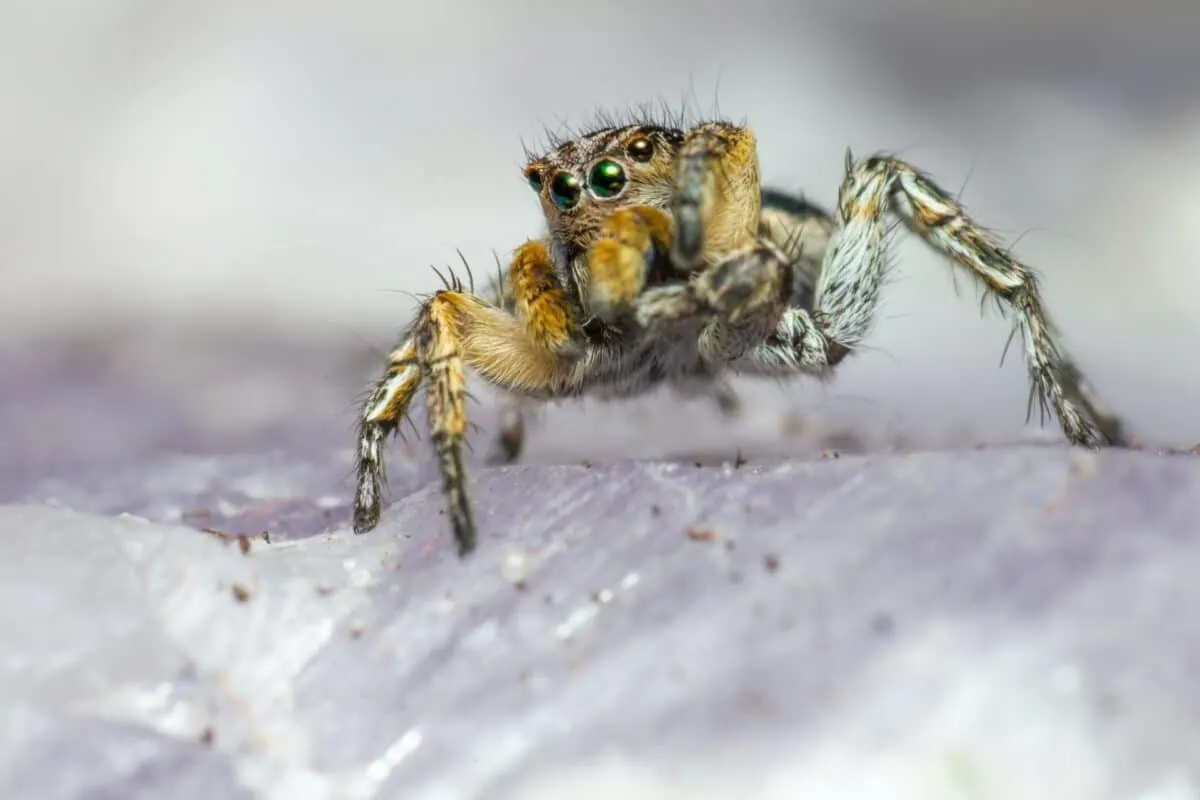Spiders have long captivated human imagination with their intricate webs, stealthy movements, and formidable reputation.
While some marvel at their beauty and role in controlling insect populations, others harbor a deep-seated fear. Like many other regions, Ohio has a diverse spider population, including a few venomous species that command our attention.
Here, we can consider the reality of Ohio’s venomous spiders, shedding light on their presence, distinguishing features, and ways to coexist safely.
Skip ahead to any section below!
Understanding Ohio’s Spider Species
Overview of Common Spiders in Ohio
The Ohio Department of Natural Resources boasts Ohio’s diverse spider species, each exhibiting unique characteristics and adaptations.
These arachnids play a vital role in maintaining ecological balance by preying on insects, including harmful pests. Some commonly encountered non-venomous spider species in Ohio include:
Orb Weavers (Araneidae):
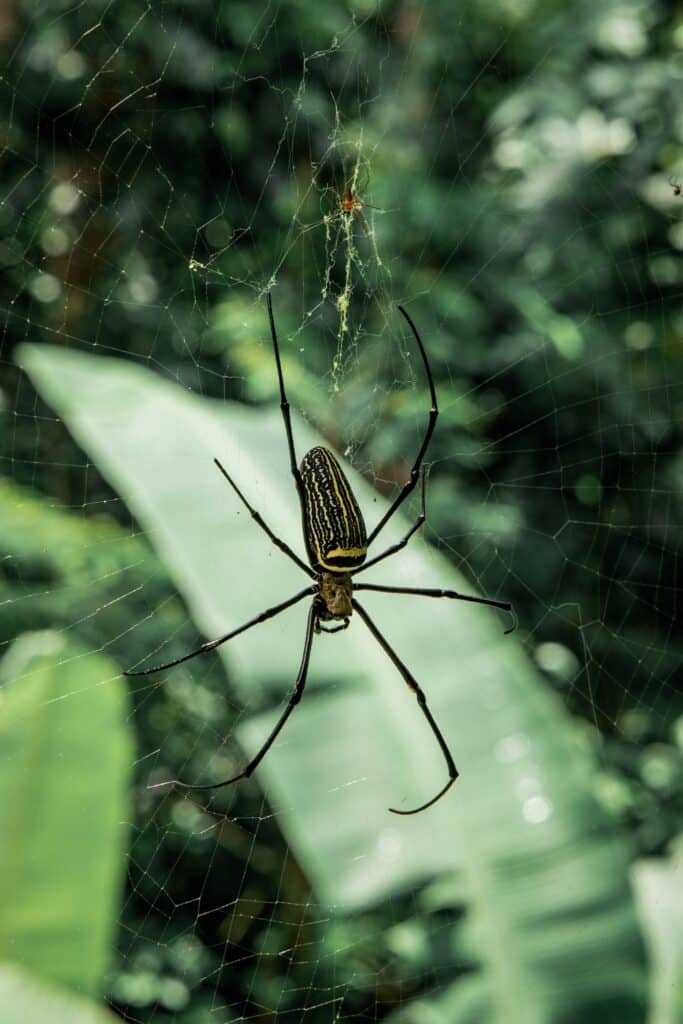
Recognizable for their intricate circular webs, they are skilled hunters who weave intricate silk structures to catch their prey. Common species in Ohio include the black and yellow garden spider (Argiope aurantia) and the cross spider (Araneus diadematus).
Check out: Discover Florida’s Most Dangerous Animals.
Jumping Spiders (Salticidae):
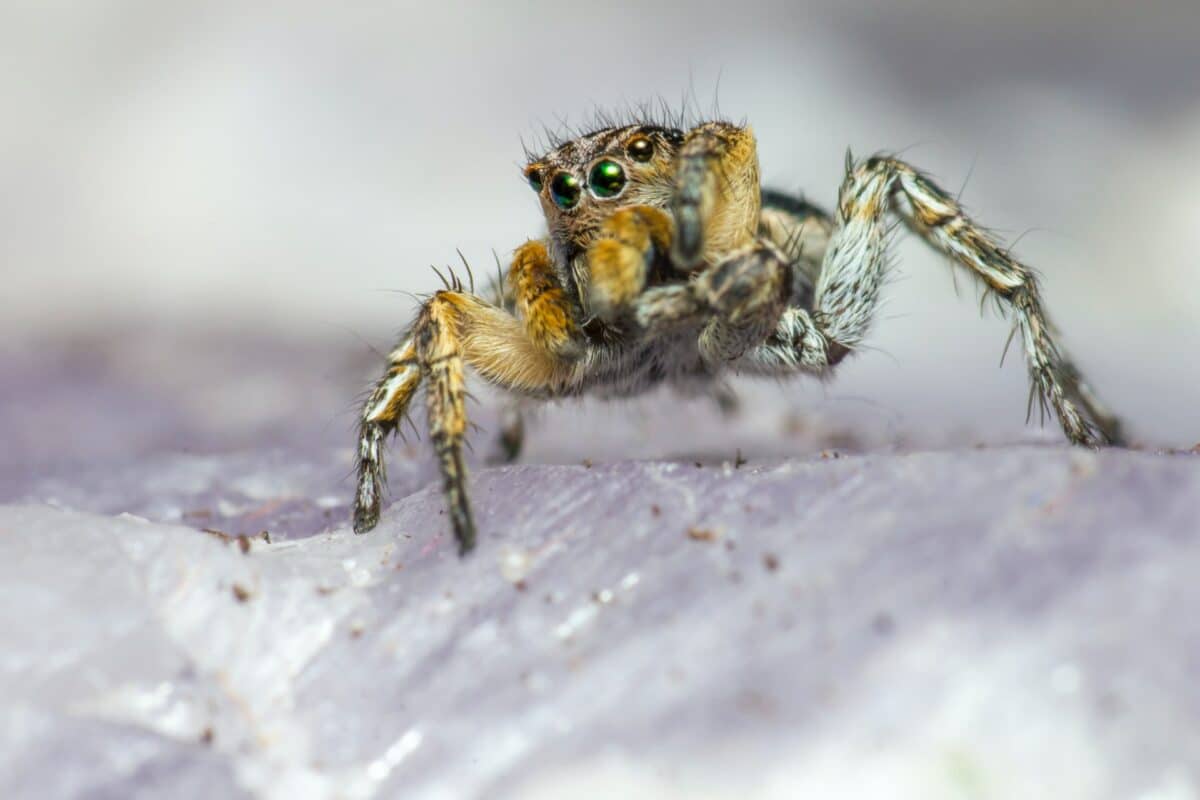
Known for their agility and remarkable vision, jumping spiders are active hunters that pounce on their prey. The bold jumping spider (Phidippus audax) and the zebra spider (Salticus scenicus) are among the species frequently encountered in Ohio.
Wolf Spiders (Lycosidae):
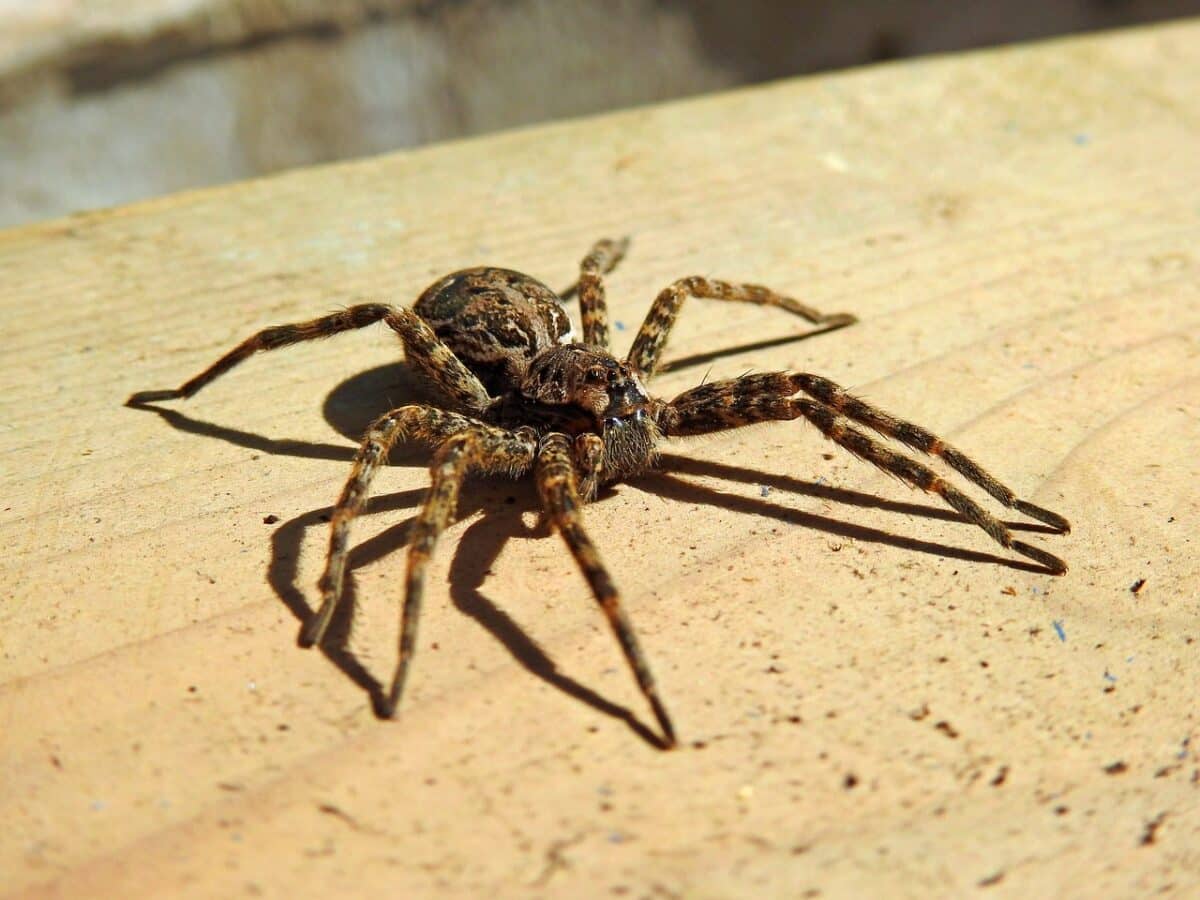
Wolf spiders are ground-dwelling hunters who possess excellent eyesight and rely on their keen senses to capture prey. The giant wolf spider (Hogna spp.) and the striped wolf spider (Pardosa spp.) are common examples in Ohio.
Check out: Discover Georgia’s Hidden Threat: The Eastern Diamondback Rattlesnake.
Venomous and Non-Venomous Spiders
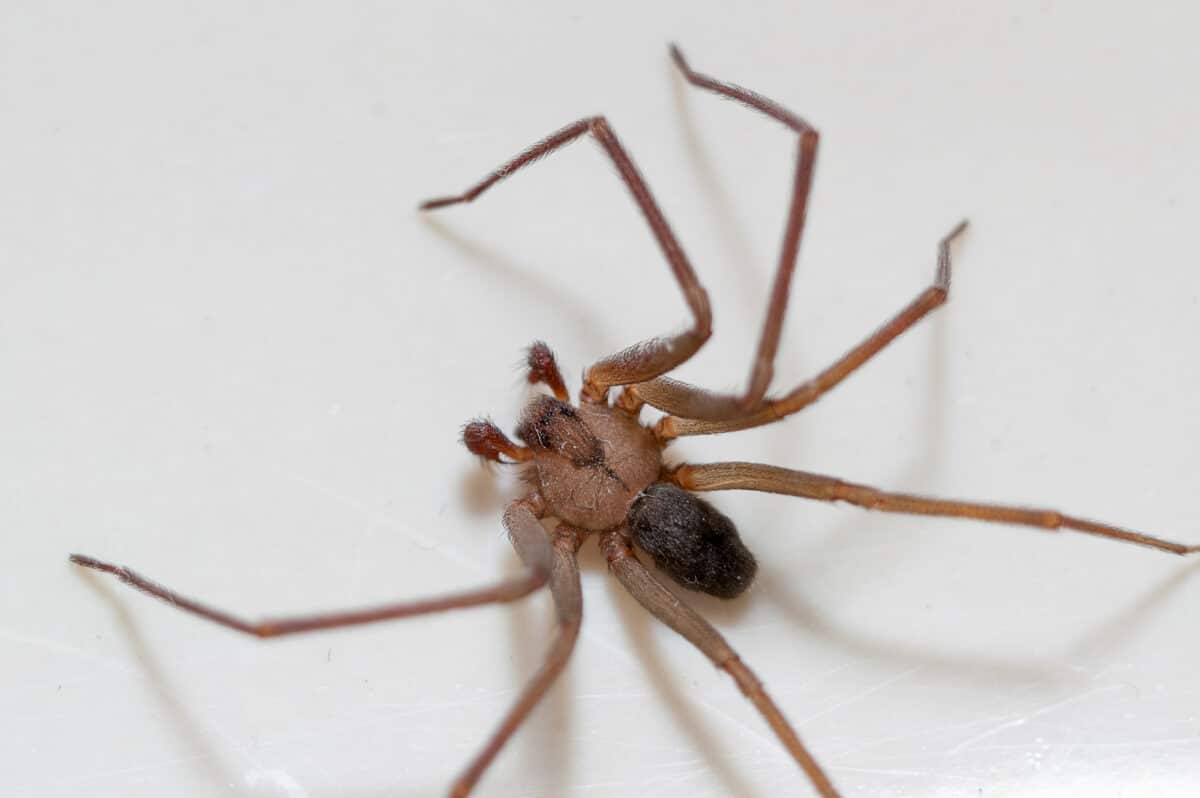
It is important to differentiate between venomous and non-venomous spiders. Venomous spiders possess venom glands and fangs designed to immobilize their prey and aid digestion, while non-venomous spiders lack these adaptations.
It’s crucial to note that venomous spiders rarely pose a significant threat to humans unless provoked or accidentally encountered. Spiders are not naturally aggressive creatures and usually prefer to avoid human contact. Their primary objective is to capture and subdue prey while maintaining their safety.
However, certain venomous spider species in Ohio warrant our attention due to their potential to cause mild to moderate reactions if bitten.
Importance of Spiders in the Ecosystem
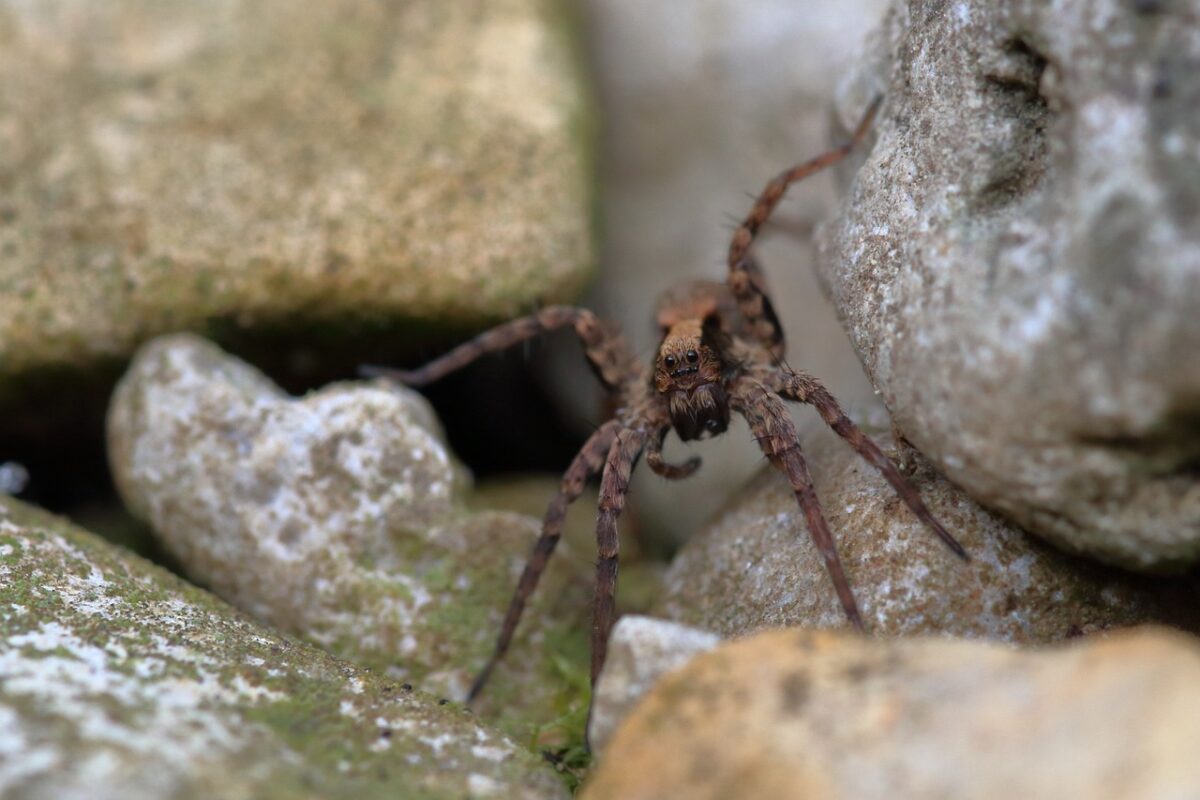
Before delving deeper into Ohio’s venomous spiders, it’s essential to appreciate the ecological significance of all spider species.
Spiders serve as nature’s pest controllers, helping to regulate insect populations naturally. Their predation on pests contributes to the overall health of ecosystems and can aid in reducing the need for chemical pesticides.
Venomous Spiders in Ohio
Black Widow Spider (Latrodectus spp.)
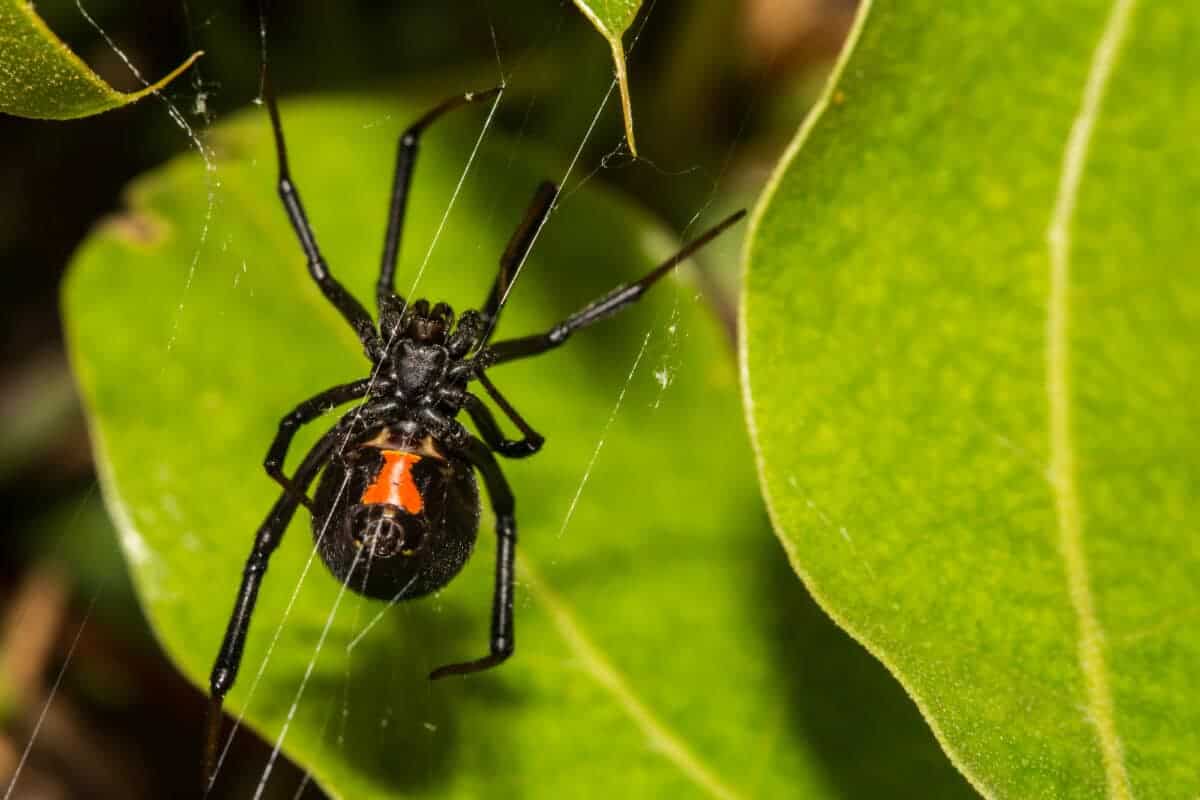
Description and Distinctive Features:
The black widow spider is arguably the most infamous venomous spider species. Females are easily recognizable due to their shiny black bodies with a distinctive red hourglass marking on the underside of their abdomen.
Males are smaller and often lack striking coloration. These spiders belong to the Latrodectus genus, including several Ohio species.
Preferred Habitats and Distribution in Ohio:
Black widow spiders prefer undisturbed areas such as woodpiles, cluttered basements, and outdoor sheds. They are known to construct irregular webs in secluded spaces. While their presence can be found throughout Ohio, they are more commonly encountered in the southern and southwestern regions of the state.
The Potency of Venom and Potential Symptoms in Humans:
The venom of black widow spiders is neurotoxic and primarily targets the nervous system. If bitten, individuals may experience localized pain, muscle cramps, abdominal pain, sweating, and nausea.
Severe cases can lead to difficulty breathing, increased blood pressure, and, in rare instances, can be life-threatening. Prompt medical attention is crucial if bitten by a black widow spider.
Brown Recluse Spider (Loxosceles reclusa)
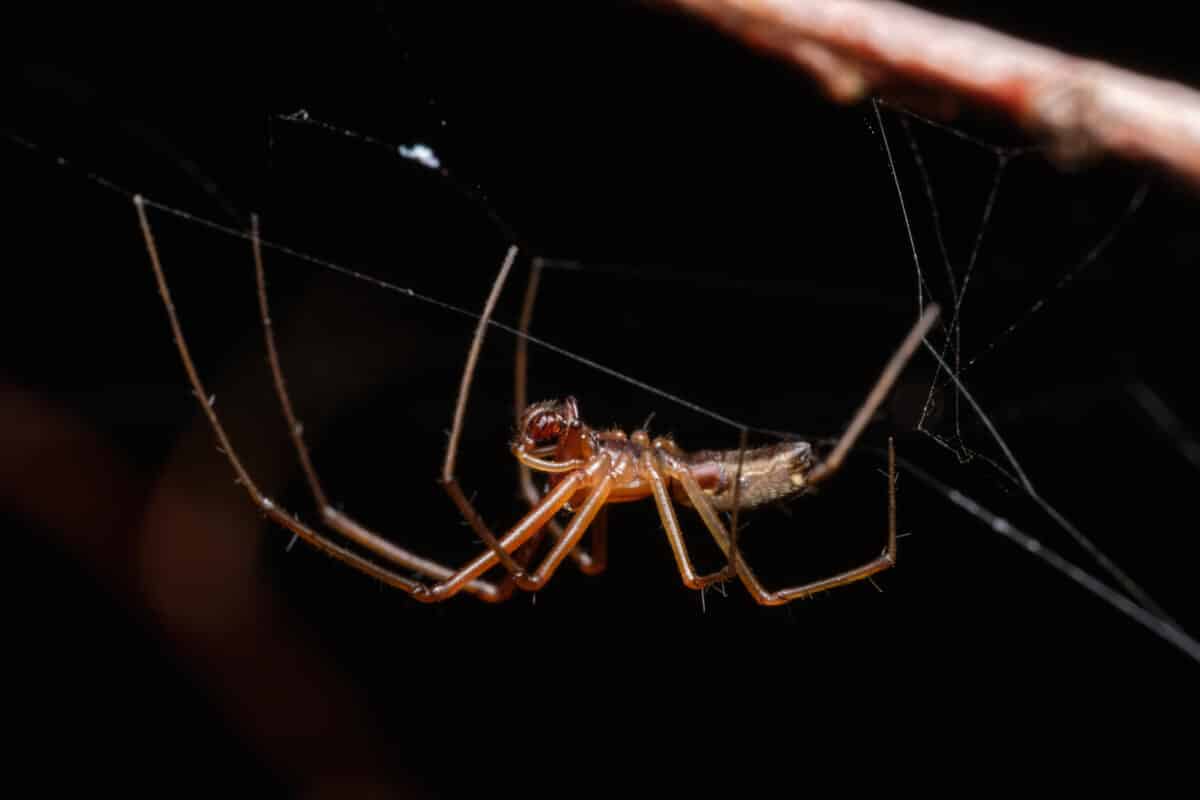
Appearance and Identifying Characteristics:
Brown recluse spiders are frequently mistaken for other non-harmful spider species because of their resemblance. They typically have a light to dark brown body with a distinctive violin-shaped marking on their cephalothorax.
However, you must understand that all brown spiders in Ohio are brown recluses.
Preferred Habitats and Ohio’s Climate Suitability:
Brown recluse spiders prefer quiet, undisturbed areas such as closets, basements, attics, and seldom-used storage spaces. While they are primarily associated with regions farther south, their presence in Ohio is rare. The state’s climate is generally unfavorable for their population to establish, making encounters less likely.
Potential Risks Associated with Bites:
Bites from brown recluse spiders can result in various reactions, from minor irritation to more severe symptoms. The venom of brown recluse spiders contains tissue-destroying enzymes that may cause necrotic wounds in some cases.
However, it’s important to note that brown recluse spider bites are rare in Ohio and other factors cause most suspected cases.
Want to learn more about venomous spiders? Britannica’s got the perfect Top 9 guide!
Differentiating Venomous and Non-Venomous Spiders
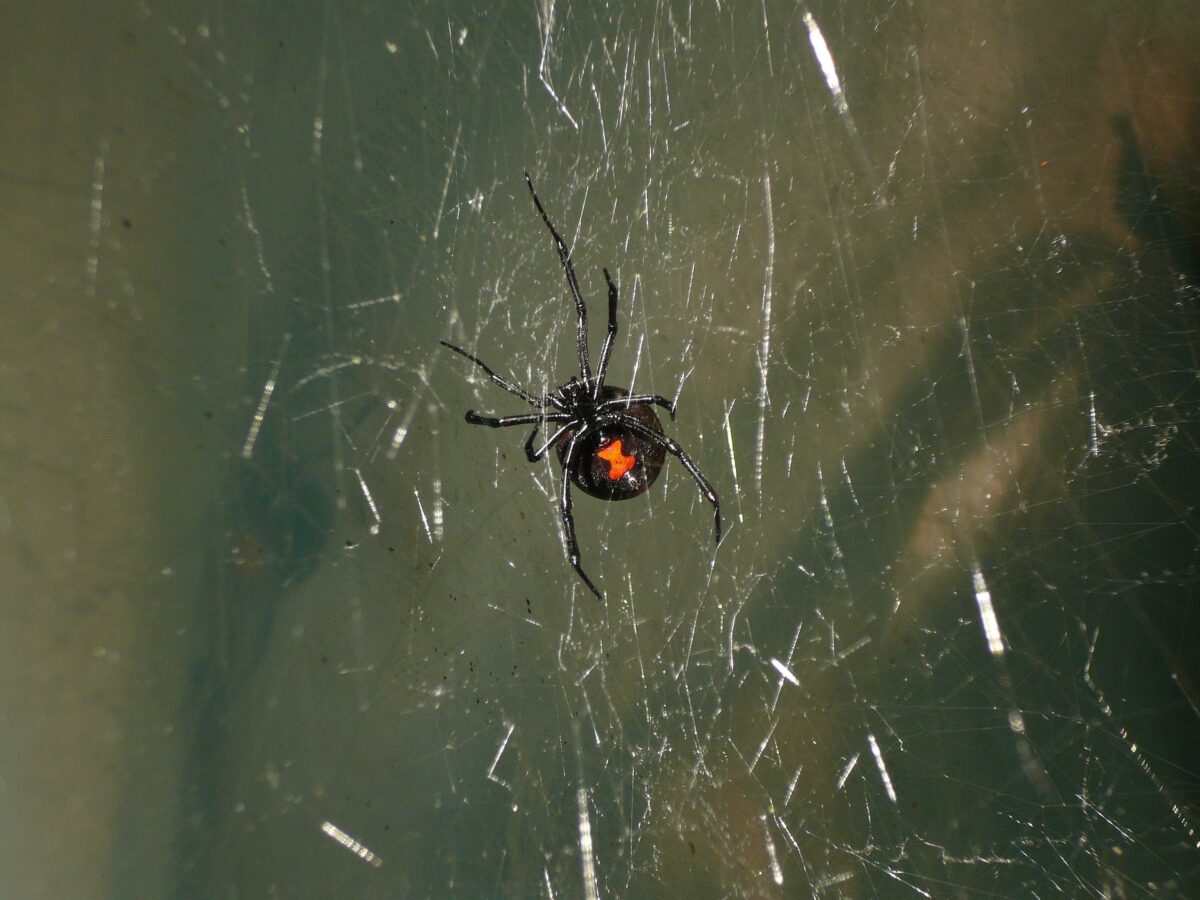
To coexist peacefully with spiders in Ohio, you must know how to differentiate between venomous and non-venomous spider species. Moreover, by understanding the key characteristics and behaviors, you can alleviate unnecessary fears and take appropriate precautions. Additionally, here are some useful tips for identifying venomous spiders found in Ohio.
| Venomous Spiders | Non-Venomous Spiders | |
| Physical Characteristics | Venomous spiders often possess distinctive markings or features that aid identification. Female black widow spiders can be identified by hourglass markings (colored red) on the underside of their abdomen. This distinct red hourglass shape is a key characteristic of black widow spiders. Brown recluse spiders, however, have a violin-shaped marking on the cephalothorax, but it’s important to note that not all brown spiders are brown recluse spiders. | Non-venomous spiders come in various shapes, sizes, and colors. They lack the characteristic markings of venomous spiders, appearing more uniformly colored or patterned. Observing their behavior and web-building habits can also provide clues. For example, orb weavers construct large, circular webs, while jumping spiders are known for their agile movements and ability to leap. |
| Behavior and Web Characteristics | Venomous spiders typically prefer undisturbed areas and construct irregular webs in secluded spaces. They are often found in quiet corners, cluttered basements, woodpiles, or rarely-used storage areas. These spiders may exhibit defensive behavior if threatened or provoked. | Non-venomous spiders occupy a wide range of habitats and build various webs. They can be found in gardens, meadows, forests, and even within homes. Their webs vary in structure and complexity, depending on the species. For instance, orb weavers build large, circular webs, while wolf spiders do not construct elaborate webs and are often found on the ground. |
Key Points
| 1. Ohio’s spider diversity includes both venomous and non-venomous species. |
| 2. Venomous spiders, such as black widows and brown recluse spiders, are present but rare in Ohio. |
| 3. Differentiating venomous and non-venomous spiders is essential to address misconceptions. |
| 4. Common myths include believing that all spiders are venomous and aggressive towards humans. |
| 5. Safety measures and prevention strategies, such as maintaining a clean environment and wearing protective clothing, can reduce the risk of spider encounters. |
| 6. Appreciating Ohio’s spider diversity involves understanding its ecological importance and creating spider-friendly habitats. |
The Bottom Line
Ohio’s venomous spiders may be a cause for caution, but they represent only a small fraction of the state’s spider diversity.
So, by understanding the characteristics of venomous and non-venomous spiders, dispelling myths, implementing safety measures, and appreciating their ecological contributions, we can attempt to coexist peacefully with them.
Therefore, embracing spider diversity allows us to witness their remarkable adaptations and contribute to the conservation of Ohio’s ecosystems. So, let’s replace fear with knowledge and appreciation and embark on discovering Ohio’s spiders.
Learn more about Spiders in Ohio here!
Thanks for reading along, see below for related articles!
Next up: Explore Texas’s Mountain Lion Population, Explore Florida’s Bull Shark Population, River Showdown: Otter Outwits A Crocodile, Explore Pennsylvania’s Coyote Population and Meet New York’s Urban Coyote Population.
- Watch: Never Approach A Bison in Yellowstone National Park - April 26, 2024
- Watch: Lizard Greets Man like a Dog! - April 25, 2024
- Watch Innocent Baby Bird Walks up to Leopard – Wild Ending! - April 25, 2024

